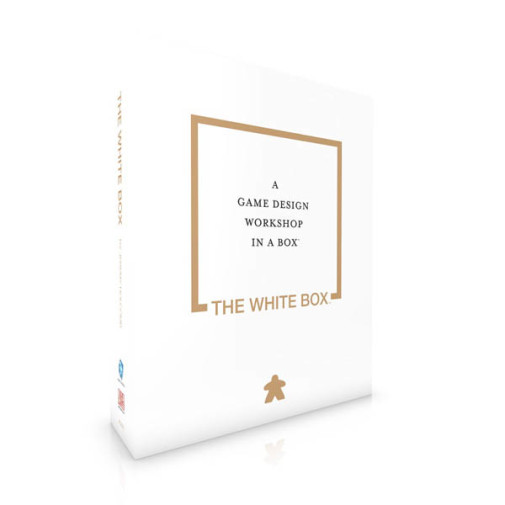We use cookies to make your experience better. To comply with the new e-Privacy directive, we need to ask for your consent to set the cookies. Learn more.
White Box: Game Design Kit in a Box
- Small parts. Not for children under 3 years.
This isn't a “baby's first Candyland" kit. If you've wanted to make your own game before, you probably know what I'm talking about – kits with a bit of Monopoly money, faceless player tokens, and a game board filled with nothing but blank-colored spaces. Well, luckily for you, this is not that kit. At the heart of this guide to game making is an in-depth 208-page booklet by game designer Jeremy Holcomb about how to design effective games. With topics ranging from how game story effects game mechanics, and how to write rules to crowdfunding, self-publishing, and promotion, there's a lot to digest. While anyone can use this kit, it's best suited to a serious beginning designer. In addition to the book, the kit comes with three sheets of various game tokens (fight, defend, sell, numbers, icons, etc.) both printed and unprinted, 150 small wooden game cubes in 6 colors, 36 wooden meeples in 6 colors, 6 distinctly-colored large wooden cubes, 12 six-sided dice in 6 colors, and 110 plastic disks in 8 colors. If you've got that burning desire to make a game, this is an excellent way to get some background and advice into what that entails, as well as the means to start designing practically.
They Say Everyone Has a Game Inside Them
Almost everyone who's ever played a game has had an idea for how to make it better. To tweak it, improve it, or even build something new from its miniatures, cards, cubes, and concepts.
We think making games is awesome. We believe it's one of the most challenging, fun, rewarding things you can do. If you've ever thought about making a game of your own, we want to help.
We made The White Box for you.
Learn, Plan, and Prototype
The White Box is a learning, planning, and prototyping tool for tabletop game designers. Inside you'll find The White Box Essays, a book of 25 essays on game design and production. It covers subjects like where to find a great concept, how to use randomness, what to ask playtesters, whether you should self-publish, how to crowdfund wisely, and what to do at game conventions.
The White Box also contains a ton of components to get you designing right away:
* 3 counter sheets with 71 pre-printed and 49 blank counters
* 150 small wooden cubes in six colors
* 36 wooden meeples in six colors
* 6 giant wooden cubes in six colors
* 12 six-sided dice in six colors
* 110 plastic discs in eight colors
If you believe designing board and card games sounds challenging, rewarding, and fun, The White Box is for you.
| Product Format: | Other |
|---|---|
| Brand: | Atlas Games |
| Grades: | 3-AD |
| ISBN: | 9781589781825 |
| Length in Inches: | 10 |
| Width in Inches: | 8 |
| Height in Inches: | 2.625 |
| Weight in Pounds: | 2.25 |

